Herring Gulls are showing up in Utah now that the weather has turned cooler. Since I frequently get asked which is which I thought this would be a good time to do a winter California and Herring Gull comparison and ID feature post.
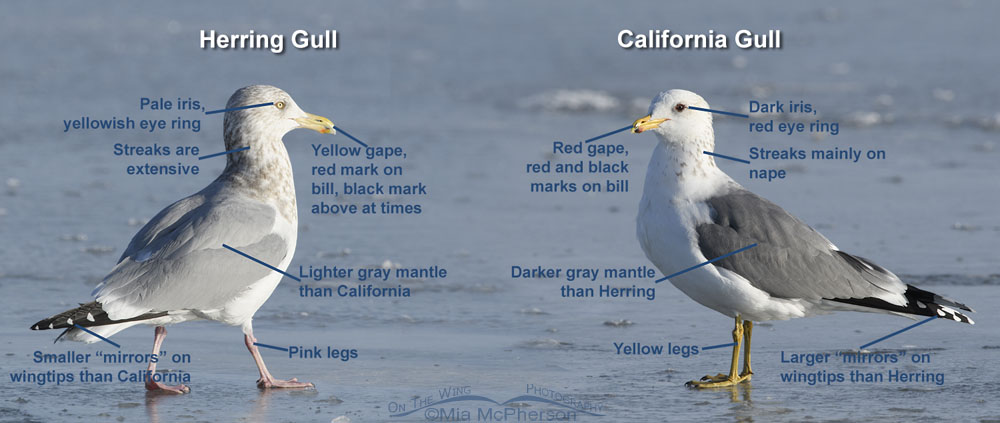 Herring Gull – California Gull Comparison and ID Features – Click image to view larger
Herring Gull – California Gull Comparison and ID Features – Click image to view larger
This graphic is a composite image of the two gull species. I took the photos of the Herring and California Gulls one minute apart at Bear River Migratory Bird Refuge while the gulls walked on the ice of the frozen marsh this past February.
Both of these gulls are adults in their winter nonbreeding plumage which is also known as Definitive Basic Plumage. Herring Gulls are generally slightly larger than California Gulls but in the field size isn’t as reliable as other key ID features can be unless the birds are side by side.
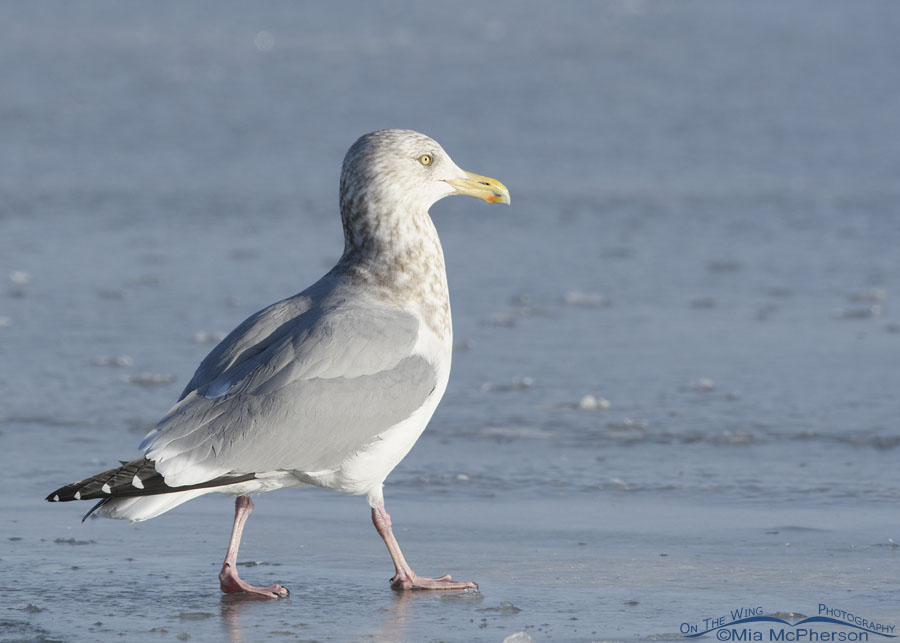 Adult Herring Gull in winter plumage in Utah
Adult Herring Gull in winter plumage in Utah
The six ID features I look for in winter Herring Gulls in Utah are:
- Pale iris with a yellow orbital or eye ring,
- Streaking on the head, neck, and nape is extensive,
- Yellow gape, red mark on the bill, sometimes there is a faded looking black mark above the red mark,
- Light gray mantle,
- Pink legs,
- Smaller “mirrors” on their wingtips, also known as sub-terminal spots on their primaries, compared to Herring.
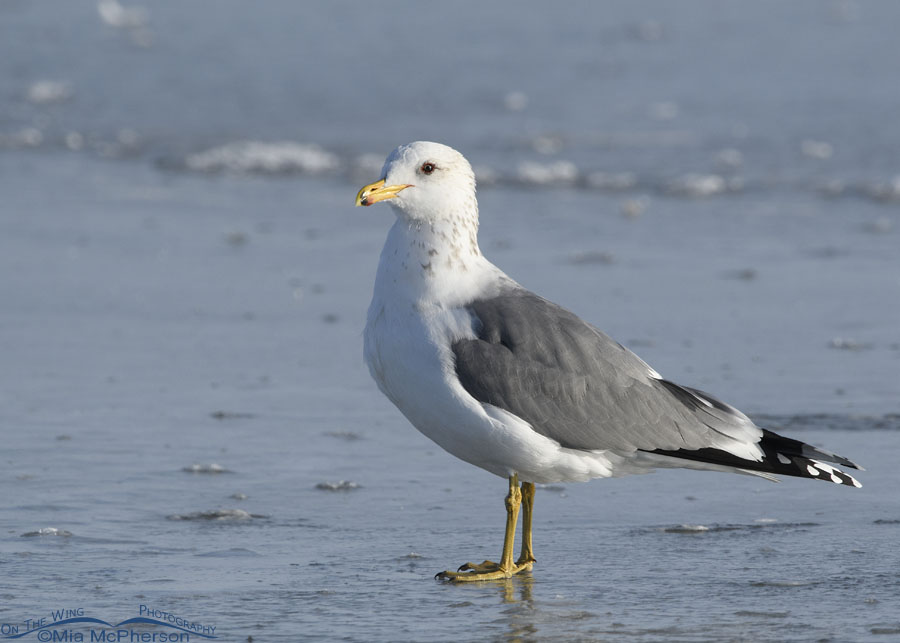 Adult California Gull in winter plumage in Utah
Adult California Gull in winter plumage in Utah
The six ID features I look for in winter California Gulls in Utah are:
- Dark iris with a red orbital or eye ring,
- Streaking is mostly on the nape,
- Red gape, red and black marks on the bill,
- Medium gray mantle,
- Yellow legs,
- Larger “mirrors” on their wingtips, also known as sub-terminal spots on their primaries, compared to California.
Note: a few California Gulls can have white spots in their irises, see here.
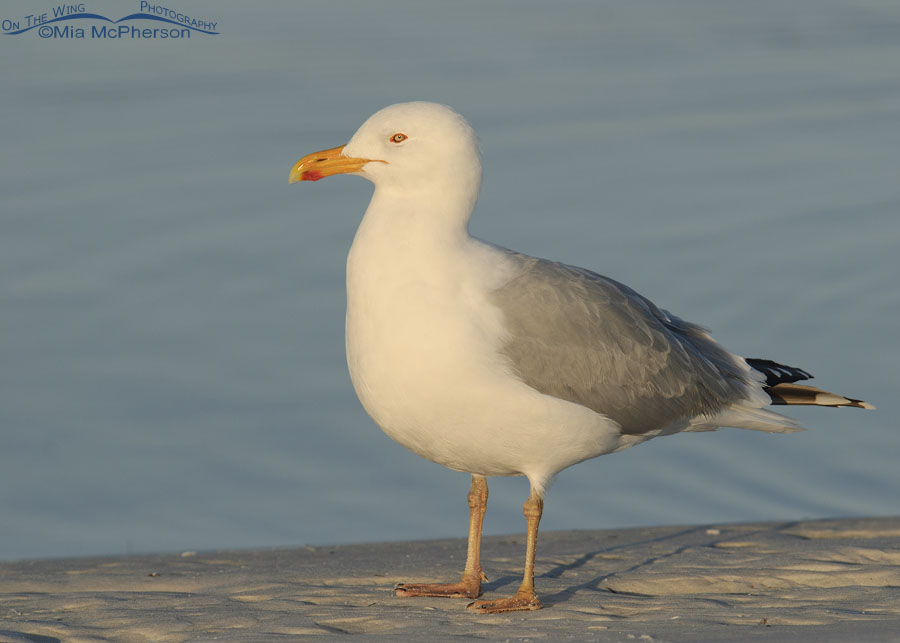 Adult Herring Gull in breeding plumage in Florida
Adult Herring Gull in breeding plumage in Florida
I don’t often see Herring Gulls in their breeding or Definitive Alternate Plumage here in northern Utah. This photo of an adult Herring Gull in breeding plumage was taken at the north beach of Fort De Soto County Park on the Gulf Coast of Florida.
The yellowish eye ring seen in nonbreeding plumage is more orange in this plumage phase than yellow and the yellow gape is brighter and more pronounced. The head, neck, and nape is a pure snow white without streaking. The bill in this plumage phase is also a brighter yellow.
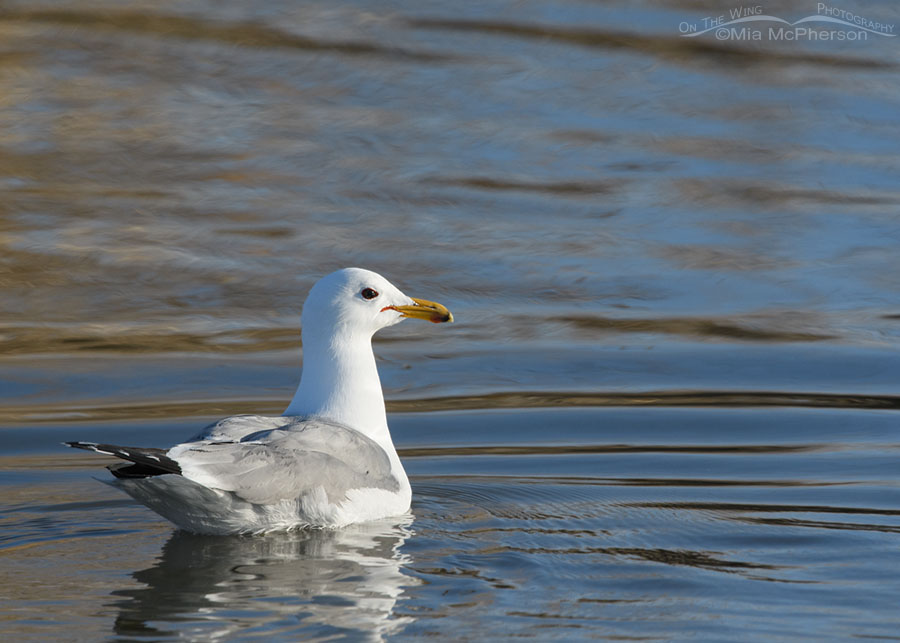 California Gull in breeding plumage floating on the Bear River
California Gull in breeding plumage floating on the Bear River
I see California Gulls in their breeding or Definitive Alternate Plumage here in northern Utah. Unlike Herring Gulls this species breeds in the state. As with Herring Gulls during this plumage phase adult California Gulls have pure white heads, necks and napes. The bill is a stronger yellow than it is during the nonbreeding season. The red gape and eye ring appear brighter and more pronounced.
Identifying adult California and Herring Gulls in nonbreeding plumage in Utah can be a challenge but by using the key ID features it can become easier.
If you like identification challenges consider that both of these gull species take about four years to obtain their adult plumage. I find that immature gull identification can be far more of a challenge than identifying species of the adults.
For now, I hope that this comparison will help sort the differences between adult California and Herring Gulls in their winter plumage for some of my local friends.
Life is good.
Mia
Click here to see more of my California Gull photos plus facts and information about this species. To view more of my Herring Gull photos plus facts and information about this species click here.


Mia – thank you for this detailed guideline – so helpful!
Really interesting narrative and pics. I didn’t know that there are so many differences between Calif., and Herring gulls. Thanks Mia.
ID assistance is always appreciated. Thank you, Mia!
Would you give me permission to post the comparison photo on the Mendocino Coast Audubon Society’s FB page?
Thank you for continuing my education – though I will probably never use this ‘in the flesh’.
Great photos and info. Thanks so much Mia!
Thank you very much for this interesting and useful information.
It is not easy to identify gulls so any help is greatly appreciated.